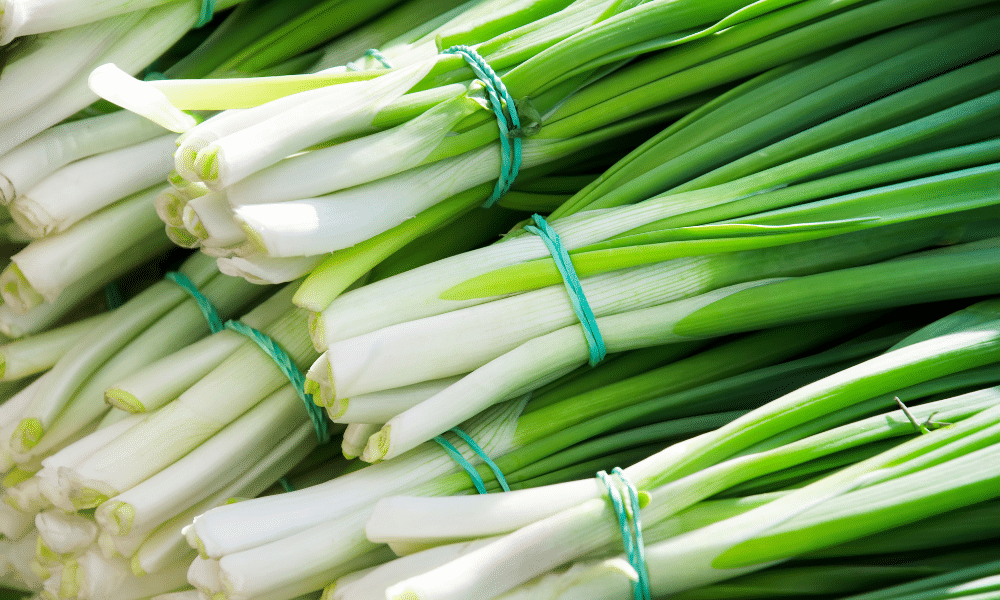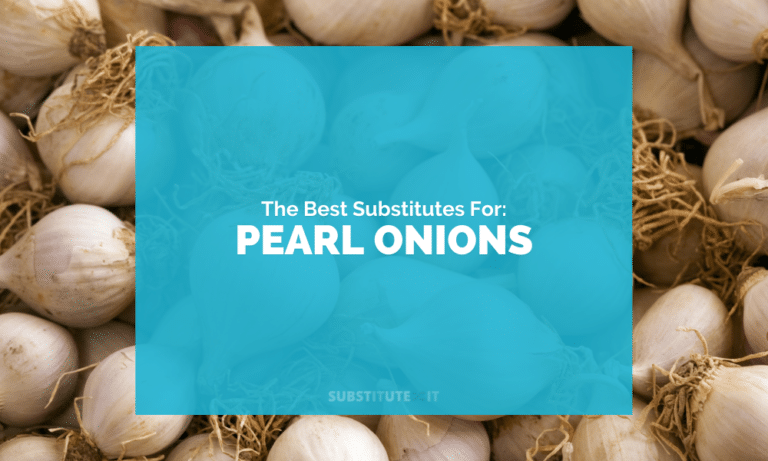Pearl onions are simply a smaller type of onion often referred to as baby onions that can come in various colours. They are not hard to find and are typically a cheap buy.
The main issue with pearl onions is that they are a pain to peel and prepare. What other onions can you use instead when you don’t have the time or mobility to deal with pearl onions?
Our 5 Substitutes for Pearl Onions
Pearl onions are slightly sweet and not as fragrant as other onion types, only giving a mild onions taste. This makes them more manageable for those with sensitive pallets or when preparing a raw meal like a salad.
Here are our top 5 substitutes for pearl onions:
1) Spring Onions
Spring onions (aka green onions) are practically identical in taste to pearl onions, with the main difference being that spring onions are not as mature as pearl onions. For this reason, their flavour is much milder.
As one of the most versatile onions, spring onions can be used in the same ways as pearl onions. They can be used in sauces, stir-frys, or as a finishing touch to any dish.
Spring onion leaves can be cut up and used in a similar way as bay leaves in stews or curries to add a mild onion kick. You just won’t have to take them out at the end.
Make Them More Fragrant
They do smell great, but spring onions are not as fragrant as pearl onions until the bulbs are split in half. Then all of the sweet onion smell is released.

2) Shallots
Shallots are a size in between white onions and pearl onions. Because they are bigger than pearl onions, they will need to be cooked for a little longer unless you cut them into similar sized pieces.
Shallots have a mildly sweet flavour like pearl onions, just with an extra hint of garlic. These flavours are delicate, but they are also deep.
They will quickly spread throughout your dish and give it a great flavour, but only if you do not cook them for too long. Overcooking shallots could ruin their flavour and leave a bland mush.
How Do You Cook Shallots?
It is best to saute shallots for a few moments before adding them to your dish to release their flavour. However, because they are quite soft, you will not want to cook them for too long as they will burn quickly once added to your dish.

3) Leeks
Leeks will work just as well when replacing pearl onions as they do any other onion. This is because leeks are part of the onion family.
Before you use leek as a substitute, make sure to saute it by itself on low heat before adding it to your dish. Though its flavours are pretty mild, leek will need to be mellowed out to properly replicate the smooth taste of pearl onions.
Leeks are a lot crunchier and firmer than pearl onions, so to achieve the same texture, you will need to add them to your dish earlier in the cooking process.
Know Your Ratios
It may have a harsher flavour than pearl onion, but once leek has been mellowed a little, you can use it in the same measurement as pearl onion. E.g. 1 cup of leek to 1 cup of pearl onion.

4) Brown Onions
Brown onions are very accessible at any supermarket for an affordable price.
They are a quick and easy way to boost the flavour of your dish and are also a suitable pearl onion substitute.
Brown onions are a lot bigger than pearl onions but can easily be chopped into the same size and used in the same way as pearl onions.
The main difference is that while pearl onions remain aromatic, brown onions will lose their aroma the longer you cook them.
Caramelise First
Brown onions work best when sauteed with some fat before being added to the rest of the dish. This releases their aroma and their sweetness. Be careful not to overcook the onions before adding them to your dish, though. Otherwise, that flavour and smell will be lost.

5) Carrots
Carrots may not offer the exact same flavour as pearl onions, but they are a common substitute for onions.
Carrots are favoured for their mild sweetness, not unlike pearl onions. Because they are a root vegetable, carrots have an earthier, more hearty flavour than onions.
They are also a lot tougher than pearl onions, requiring a longer cooking time. Make sure to think of this in advance when prepping to cook your dish.
To Peel or Not to Peel?
Due to their firmness compared to pearl onions, carrots will cook quicker if their rough skin is peeled away. You can wash and chop up the peels and add them to your dish for extra flavour.
Other Substitutes for Pearl Onions
If you only have an array of herbs and seasoning to hand and don’t want to have to pop to the shop, here are a few herbs you probably have that you can use to replace the flavour of pearl onion in your dish:
- Onion Powder – Though it will not have the same texture, onion powder will give an intense onion flavour, so don’t over it.
- Chives – Milder than pearl onion, chives are a mixed flavour of onion and garlic. The more you use, the stronger the flavour will be.
- Fennel – Often paired with onion, ground fennel has a hint of anise and the sweetness of pearl onion. If you don’t mind the slight liquorice flavour, then it will work fine.
Summary
Pearl onions are just a specific type of onion and, as such, can be replaced by pretty much any other kind of onion, including leeks and shallots. But for the same mild flavour, spring onions work best.
